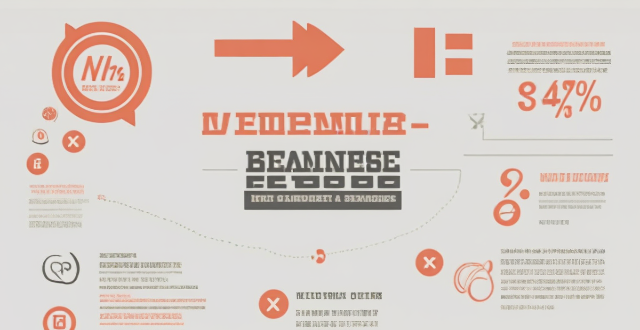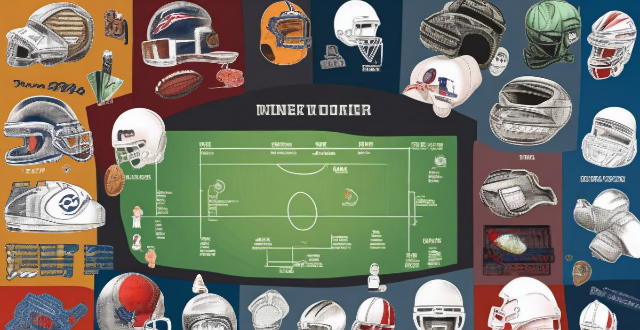Week Sale

Are there specific days of the week or times of the month when sales are most common ?
This text discusses common patterns and trends in sales throughout the week and month. It suggests that there are certain days of the week and times of the month when sales tend to be higher or lower, depending on the industry, product, and target audience. The text provides general insights for each day of the week and different times of the month, such as Monday being a slower start to the week with people getting back into their routines after the weekend, Tuesday showing an uptick in sales as the workweek progresses, Wednesday offering midweek deals, Thursday seeing increased sales in certain categories as customers plan for the weekend, Friday experiencing a spike in sales due to weekend excitement, Saturday being a busy retail day due to more free time, and Sunday having tapering off sales as people prepare for the upcoming week. The text also suggests that there are certain times of the month when sales are most common, such as the beginning of the month when many consumers receive their paychecks and have more spending power, mid-month when people adjust their budgets and look for deals or necessities they've run out of, and the end of the month when businesses aim to meet monthly targets and offer promotions to boost numbers before the month ends. However, the text emphasizes that these trends are general and that it's important to analyze one's own business data and customer behavior to determine the best timing for sales and promotions. Additionally, external factors such as holidays, seasonality, and economic conditions can also significantly influence sales patterns.

What is the difference between a sample sale and a regular sale ?
The main difference between a Sample Sale and a Regular Sale is that the former is aimed at liquidating old stock, samples, or prototypes that are no longer needed for business operations, while the latter is intended to increase sales volume, attract customers, or clear seasonal merchandise. A sample sale often features more aggressive discounts since the goal is often to clear space rather than make a profit, whereas a regular sale offers new, unused products that are currently in season or about to be phased out.

What is sample sale ?
A sample sale is an event where retailers offer discounted samples, overstocked items, or end-of-season merchandise. Key features include discounted prices, limited quantities, mixed quality, exclusive access, no returns or exchanges, and a fast-paced environment. Tips for shopping at a sample sale include researching the brand, being prepared, arriving early, setting a budget, inspecting items carefully, knowing your size, and having fun.

What kind of discounts should I offer during a clearance sale ?
Offering the right discounts during a clearance sale is crucial for attracting customers and clearing out inventory. Here are some strategies to consider: 1. Percentage-Based Discounts: Start with moderate discounts of around 20-30% on selected items and increase gradually as the sale progresses. 2. Buy One, Get One Free (BOGO) Offers: Select slow-moving items or bundle complementary items together. 3. Tiered Discounts: Encourage customers to spend more by offering tiered discounts based on the amount spent or quantity purchased. 4. Time-Limited Deals: Run short-term promotions like flash sales or countdown deals to create a sense of urgency. 5. Membership or Loyalty Discounts: Offer exclusive deals for members of your loyalty program or reward repeat customers with extra savings. 6. Price Threshold Discounts: Apply discounts only when a certain amount is spent or offer a maximum price guarantee. 7. Gift with Purchase (GWP): Reward loyal customers with free gifts or include promotional items with purchases over a certain amount. 8. Clearance Rack or Section: Designate a specific area or rack for clearance items and use prominent signage and labels to highlight the savings. 9. Online-Exclusive Deals: Offer exclusive online deals to encourage online shopping and reduce the burden on physical store inventory. 10. Combination Discounts: Mix and match different types of discounts, such as a percentage-based discount combined with a GWP offer or allow customers to combine multiple discounts for maximum savings. Remember, the goal of a clearance sale is to move inventory while still maintaining profit margins and brand reputation. Be strategic in your discounting approach and communicate clearly with customers about the deals you're offering.

How much money do top football players earn per week ?
Top football players can earn a significant amount of money per week, with factors such as performance, club affiliation, market value, sponsorship deals, and image rights affecting their earnings. Some of the highest-paid players, like Lionel Messi and Cristiano Ronaldo, can earn millions per week when taking into account their salary, bonuses, and endorsements. However, it's important to note that these earnings are the result of immense talent, hard work, and dedication to the sport.

What are the pros and cons of having a clearance sale ?
Clearance sales can boost sales and clear out old inventory, but may also devalue brand image and lead to lower profit margins. Retailers should consider their goals and target audience before implementing a clearance sale.

How do I know if a brand sale event is worth attending ?
This comprehensive guide helps you discern whether a particular brand sale event is worth your time and investment by assessing the brand's reputation, evaluating the savings, understanding the type of sale, checking the sale conditions, analyzing your needs, preparing for popular sales, and maintaining awareness of potential scams. It emphasizes that a smart shopper is an informed shopper and encourages using these tips to navigate the world of sales and find the best deals without compromising on quality or falling into marketing traps.

Can I try on clothes at a sample sale ?
Attending a sample sale can be an exciting experience for fashion enthusiasts, as it often presents the opportunity to purchase designer clothing at discounted prices. However, one question that frequently arises is whether customers are allowed to try on clothes during these events. In this article, we will explore the intricacies of trying on clothes at a sample sale and provide some tips for making the most of your shopping experience.

When is the next brand sale event ?
The next brand sale event is a highly anticipated shopping opportunity featuring significant discounts on a wide range of products from top brands. Customers can expect percentage-based discounts, buy one get one free offers, and limited time flash sales across various product categories such as fashion, electronics, home & kitchen, and beauty & personal care. Special promotions like loyalty rewards, gift cards, and free shipping may also be available during the event. To make the most out of the sale event, shoppers should plan ahead, set a budget, compare prices, stay informed, and act fast to secure the best deals.

How can I get the most out of a brand sale event ?
Maximizing Benefits from a Brand Sale Event: - Pre-sale preparation includes researching, creating a wish list, and setting a budget. - During the sale, act fast, compare prices, and use coupon codes for discounts. - Post-sale strategies involve checking for price adjustments, understanding return policies, and leaving feedback. - Additional tips include signing up for emails, following on social media, and joining loyalty programs.

How do I know if a sample sale is worth attending ?
Sample sales can be a goldmine for discounts but not all are worth attending. To determine if a sample sale is worthwhile, consider factors like the reputation of the brand, the depth of discounts, the selection and condition of merchandise, and the return policy. Logistical aspects such as location, accessibility, and potential crowds should also be considered. Doing research, setting a budget, and having a shopping list can further help in making the most out of a sample sale.

How can I advertise my clearance sale effectively ?
## Effective Strategies for Promoting a Clearance Sale To maximize the success of your clearance sale, it's essential to employ effective advertising strategies. Here are five key methods to promote your upcoming event: ### **1. Social Media Campaigns** Utilize popular social media platforms like Facebook, Twitter, Instagram, and LinkedIn to reach a broad audience. Create engaging posts or stories that highlight the discounts and promotions available during the sale. Encourage followers to share these posts with their friends and family to increase visibility. ### **2. Email Marketing** Send out newsletters or promotional emails to your subscribers announcing the clearance sale and showcasing the best deals. Make sure to include attractive visuals and clear call-to-action buttons to encourage customers to take action. ### **3. In-Store Signage** If you have a physical store, utilize in-store signage to draw attention to your clearance sale. Place posters, banners, and signs throughout the store to highlight the discounts and promotions available during the event. This will help attract customers who are already shopping at your location. ### **4. Local Advertising** Consider investing in local newspapers, magazines, or radio stations to advertise your clearance sale. This will help you reach potential customers who may not be active on social media or subscribed to your email list. Be sure to provide all the necessary details about the sale, including dates, times, and location. ### **5. Collaborate with Influencers** Partner with influencers in your industry to expand your reach and attract more customers to your clearance sale. Find influencers who align with your brand values and ask them to promote your event on their social media channels or blogs. Offer them exclusive discounts or free products in exchange for their promotion.

When is the best time to attend a sample sale ?
Attending a sample sale can be an exciting experience for those who love shopping and finding great deals. However, it's important to know when the best time to attend one is. Factors that influence the timing of a sample sale include seasonality, holidays and special events, and inventory clearance. To make the most out of your shopping experience, research beforehand on the brand(s) you're interested in, arrive early, be prepared with cash or a credit card and a bag or box to carry your purchases, be open-minded, and don't get carried away. By following these tips, you can score some amazing deals while sticking to your budget.

What are the benefits of shopping at a sample sale ?
Shopping at a sample sale can provide numerous benefits to the savvy shopper. These include significant discounts, unique finds, the ability to try before you buy, quality assurance, support for sustainability, insider access, networking opportunities, and tips on how to navigate a sample sale effectively. By following these guidelines, you can fully enjoy the perks of shopping at a sample sale while getting great deals on high-quality products.

How much exercise is needed per week to prevent chronic disease ?
Chronic diseases are a major cause of death and disability worldwide. Regular physical activity can help reduce the risk of developing chronic diseases such as heart disease, diabetes, and some types of cancer. According to the World Health Organization (WHO), adults should aim to do at least 150 minutes of moderate-intensity aerobic exercise or 75 minutes of vigorous-intensity aerobic exercise each week, along with muscle-strengthening activities at least twice a week. However, the amount of exercise needed to prevent chronic diseases may vary depending on individual factors such as age, sex, body weight, and overall health status. It's recommended that people try to incorporate at least 30 minutes of moderate-intensity aerobic exercise into their daily routine, along with strength training exercises whenever possible.

How do I meal prep for a week using simple home-cooked recipes ?
Meal prepping is an excellent way to save time, money, and ensure that you are eating healthy meals throughout the week. Here's how you can meal prep for a week using simple home-cooked recipes: 1. Plan your meals based on your dietary needs, preferences, and schedule. 2. Shop for ingredients according to your meal plan. 3. Prep your ingredients ahead of time by washing, chopping, and storing them in airtight containers. 4. Cook and assemble your meals into individual portions and store them in meal prep containers. 5. Reheat and enjoy your pre-made meals throughout the week. By following these steps, you can successfully meal prep for an entire week using simple home-cooked recipes.

What are some popular items currently on sale ?
Popular items currently on sale include TVs, smartphonesPopular items currently on sale include TVs, smartphones consoles, kitchen appliances, smartphones, laptops, gaming consoles, kitchen appliances, cleaning devices, large appliances, clothing, handbags, shoes, jewelry, sports gear, camping gear, outdoor activities, educational toys, building sets, board games, and puzzles.

How can I maximize profits during a clearance sale ?
Clearance sales are a great opportunity for retailers to clear out old inventory and make room for new products. However, it's important to approach clearance sales strategically in order to maximize profits. Here are some tips on how to do so: 1. Analyze Your Inventory: Before you start your clearance sale, take the time to analyze your inventory. Identify which items have been sitting on the shelves for a long time and which ones are still selling well. This will help you determine which items to include in your clearance sale and which ones to keep at full price. 2. Set Competitive Prices: When setting prices for your clearance items, be sure to research competitors' prices and set yours accordingly. You want to offer customers a deal that they can't find elsewhere, but also ensure that you're not selling your products for less than they're worth. Consider offering tiered discounts, where customers receive larger discounts as they purchase more items. 3. Promote Your Sale: Promoting your clearance sale is key to attracting customers and maximizing profits. Use social media, email marketing, and in-store signage to spread the word about your sale. Consider partnering with local influencers or bloggers to help promote your sale and reach a wider audience. 4. Offer Bundle Deals: Bundle deals are a great way to encourage customers to buy multiple items during your clearance sale. For example, if a customer purchases a dress, offer them a discount on a matching pair of shoes or accessories. This not only helps move more products but also increases the overall value of each transaction. 5. Create Urgency: Creating a sense of urgency can motivate customers to make purchases during your clearance sale. Consider offering limited-time discounts or "flash sales" where certain items are discounted for a short period of time. This can encourage customers to act quickly and make purchases before the sale ends. 6. Optimize Your Store Layout: The layout of your store can have a significant impact on sales during a clearance event. Make sure that clearance items are easily accessible and prominently displayed. Consider creating dedicated sections or aisles for clearance items to make it easy for customers to browse and find what they're looking for. 7. Train Your Staff: Your staff plays a crucial role in the success of your clearance sale. Make sure they are trained on the details of the sale, including pricing and any special promotions. Encourage them to upsell customers by suggesting complementary products or bundle deals. Happy, knowledgeable staff can go a long way in creating a positive shopping experience for customers. By following these tips, you can maximize profits during your clearance sale while providing customers with great deals on products they love.

Can I negotiate prices at a sample sale ?
Negotiating prices at a sample sale is uncommon but possible under certain conditions. Sample sales aim to clear out inventory, often at discounted rates. Challenges to negotiation include fixed pricing, high demand, and already reduced prices. Opportunities for negotiation might arise when buying multiple items or if an item has a flaw. Approach negotiations politely and be ready to accept the original price. Alternative strategies include looking for coupons or waiting for deeper discounts towards the end of the sale.

How do I track the success of my clearance sale ?
When it comes to tracking the success of your clearance sale, there are several key metrics and strategies you can use. Here's a detailed guide on how to do so effectively: 1. **Sales Revenue**: Measure the total revenue generated from the clearance sale and compare it with past sales data to see if there has been an increase or decrease in revenue. 2. **Customer Engagement**: Track the number of visitors who came specifically for the clearance sale and look at the engagement rate - how long were they on your site? Did they interact with multiple products? 3. **Conversion Rates**: What percentage of visitors made a purchase during the clearance sale? Also consider the cart abandonment rate. If many potential customers added items to their cart but didn't complete the purchase, this indicates areas for improvement. 4. **Inventory Movement**: Keep track of the units sold during the clearance sale and measure the reduction in inventory levels as a result of the clearance sale. This helps in future planning and management of stock. 5. **Profit Margin Analysis**: Calculate the profit margin per item sold during the clearance sale and measure the overall profit margin for the clearance sale period. This includes all costs associated with running the sale. 6. **Return on Investment (ROI)**: Include any additional costs incurred due to the clearance sale, such as marketing expenses or extra staff hours, and calculate the return on investment by comparing the net profits against the costs of running the clearance sale. 7. **Customer Feedback**: Use customer surveys and reviews to gather feedback about the clearance sale and analyze social media sentiment during and after the clearance sale. Positive comments and shares indicate a successful event. 8. **Post-Sale Analysis**: After the sale, analyze which products need replenishment based on their performance during the clearance sale and use the data collected to plan future sales events more effectively. Identify what worked well and what didn't, and make adjustments accordingly. By focusing on these key metrics and strategies, you can effectively track the success of your clearance sale and make informed decisions for future sales events.

How do I manage inventory during a clearance sale ?
Managing inventory during a clearance sale requires careful planning and execution. Here are some tips to help you manage your inventory effectively: 1. Analyze your current inventory levels to identify which products need to be sold off and how much stock you have of each item. 2. Set clear objectives for your clearance sale, including how much revenue you want to generate and what percentage of your inventory you want to sell off. 3. Identify slow-moving products that have been sitting in your warehouse for an extended period and offer them at a discounted rate. 4. Determine the discount levels for each product based on its demand and profit margin. 5. Promote your clearance sale through various channels such as social media, email marketing, and in-store signage. 6. Track sales and inventory levels throughout the clearance sale to identify which products are selling well and which ones are not. 7. Restock popular products that sell out quickly during the clearance sale. 8. Don't forget about returns, and make sure you have a clear return policy in place and train your staff to handle returns efficiently.

When is the best time to have a clearance sale ?
A clearance sale is an excellent opportunity for businesses to clear out old inventory and make room for new products. However, timing is crucial when it comes to having a successful clearance sale. In this article, we will discuss the best time to have a clearance sale and how to make the most of it. Before deciding on the best time to have a clearance sale, there are several factors that you need to consider: inventory levels, seasonality, market trends, and customer buying habits. Some of the best times to have a clearance sale include end of season sales, holiday sales periods such as Black Friday and Boxing Day, slow sales periods, and before launching new products. To make the most of your clearance sale, promote your sale, offer extra discounts, bundle products, limit quantities, and provide excellent customer service.

What are some creative ways to promote a clearance sale ?
Clearance sales are an excellent opportunity for businesses to clear out old inventory and make room for new products. However, promoting a clearance sale requires creativity and strategy to attract customers and maximize sales. Here are some creative ways to promote a clearance sale: ## 1\. Create Urgency with Limited Time Offers Limited time offers create a sense of urgency that can drive customers to take action. You can promote your clearance sale by setting a deadline for the sale and advertising it prominently on your website, social media channels, and in-store signage. ***Key Takeaways:*** * Set a deadline for the clearance sale * Advertise the deadline on all marketing channels ## 2\. Offer Bonus Deals or Free Gifts Offering bonus deals or free gifts with purchase can be an effective way to attract customers to your clearance sale. For example, you could offer a free gift with any purchase over a certain amount or a buy-one-get-one-free deal on select items. ***Key Takeaways:*** * Offer bonus deals or free gifts with purchase * Promote the offer on all marketing channels ## 3\. Use Social Media to Spread the Word Social media is a powerful tool for promoting your clearance sale. You can use platforms like Facebook, Instagram, and Twitter to share images and videos of your sale items, highlight special deals, and encourage customers to share your posts with their friends and followers. ***Key Takeaways:*** * Share images and videos of sale items on social media * Encourage customers to share your posts with their friends and followers ## 4\. Partner with Influencers Partnering with influencers in your industry can help you reach a wider audience and increase awareness of your clearance sale. You can offer influencers exclusive discounts or free products in exchange for promoting your sale to their followers. ***Key Takeaways:*** * Partner with influencers in your industry * Offer exclusive discounts or free products in exchange for promotion ## 5\. Host a Pop-Up Shop or Event Hosting a pop-up shop or event can create buzz around your clearance sale and attract customers who may not have otherwise known about it. You can invite local bloggers, influencers, and media outlets to cover the event and generate additional exposure for your sale. ***Key Takeaways:*** * Host a pop-up shop or event to create buzz around your clearance sale * Invite local bloggers, influencers, and media outlets to cover the event

Are the items in a sample sale returnable or exchangeable ?
Sample sales can have various return and exchange policies. Some items are final sale, while others may have limited return periods or require the item to be in original condition for returns. Some retailers offer only store credit instead of refunds, and others allow exchanges but no refunds. It's important to know the specific policies before purchasing to avoid disappointment later on.

How do I set pricing for items in a clearance sale ?
When setting pricing for items in a clearance sale, consider the purpose of the sale, analyze costs, research competitor pricing, consider customer perception, use psychological pricing strategies, be flexible with pricing, and communicate the savings.

What are the best strategies for a successful clearance sale ?
Clearance sales are an effective way to liquidate excess inventory and attract customers looking for deals. Here are some strategies to ensure your clearance sale is successful: 1. Advertise in Advance 2. Create Eye-catching Displays 3. Offer Competitive Discounts 4. Optimize Online Presence 5. Provide Excellent Customer Service 6. Follow Up Post-Sale By implementing these strategies, you can maximize the success of your clearance sale while providing value to your customers. Remember to measure key performance indicators such as sales revenue, customer traffic, and return on investment to evaluate the effectiveness of your clearance sale efforts.

Is there a specific amount of exercise needed per week to see mental health benefits ?
The article discusses the importance of exercise for mental health and explores if there is a specific amount of exercise needed per week to see mental health benefits. It mentions that various health organizations have established guidelines for the recommended amount of exercise per week for adults, focusing on physical health outcomes but also acknowledging the mental health benefits associated with regular exercise. The article suggests that engaging in at least 150 minutes of moderate-intensity exercise per week can lead to significant improvements in mental health, alternatively performing at least 75 minutes of vigorous-intensity exercise per week can also yield positive results. A combination of moderate and vigorous exercises can provide a well-rounded approach to enhancing mental well-being.

How many times a week should I practice yoga poses to see results ?
Practicing yoga poses is an excellent way to improve your flexibility, strength, and overall well-being. However, the frequency of your practice can greatly impact the results you achieve. In this article, we will discuss how many times a week you should practice yoga poses to see noticeable improvements in your physical and mental health. Before determining the ideal number of yoga sessions per week, it's essential to consider several key factors: your current fitness level and experience with yoga, the amount of time you can dedicate to each session, and your specific goals (e.g., increased flexibility, stress relief, muscle building). By taking these factors into account, you can create a personalized yoga routine that suits your needs and helps you achieve your desired outcomes. For beginners, starting with two or three sessions per week is generally recommended. This allows your body to gradually adapt to the postures and prevents overexertion or injury. As you become more comfortable with the practice, you can gradually increase the frequency of your sessions. Once you have established a consistent yoga practice and gained some experience, increasing the frequency of your sessions can help you continue to see progress. For intermediate practitioners, aiming for four to five sessions per week is often beneficial. This allows you to maintain your current level of flexibility and strength while also challenging yourself to try more advanced postures and sequences. Advanced yogis who have been practicing for several years may choose to practice daily or even multiple times per day. This level of commitment requires a significant amount of time, discipline, and dedication but can lead to profound transformations in both physical ability and mental clarity. Regardless of how frequently you choose to practice yoga poses, there are several tips that can help you maximize the benefits of your sessions: set clear goals, mix up your routine, stay hydrated, and listen to your body. By following these guidelines and adjusting your frequency based on your individual needs and goals, you can create a yoga practice that leads to lasting improvements in both your physical and mental well-being.

How do I prepare for a successful sample sale shopping experience ?
Sample sales can be a great opportunity to score designer goods at a fraction of the retail price. However, they can also be overwhelming and chaotic if you're not prepared. Here's how to get ready for a successful sample sale shopping experience: ## Research Beforehand - **Know the Brands**: Make a list of the brands that will be featured in the sale and familiarize yourself with their styles and price points. - **Understand the Sale Structure**: Find out if there are any restrictions on the number of items you can buy and check if the sale accepts credit cards or is cash only. ## Plan Your Attack - **Set a Budget**: Decide how much you're willing to spend before you go and stick to your budget to avoid overspending. - **Make a Wish List**: Prioritize the items you want most and keep this list in mind as you navigate the sale. ## Dress Appropriately - **Wear Comfortable Clothing**: Choose clothing that allows you to move freely and try things on quickly. Layer your outfit for easy changing in crowded fitting rooms. - **Opt for a Small Bag**: A small crossbody bag keeps your hands free and reduces clutter. Only bring essentials like your wallet, phone, and a list if needed. ## Arrive Early - **Beat the Crowds**: Get there when the doors open to have the best selection. This also gives you time to scope out the layout of the sale. - **Be Prepared to Wait**: Bring a book or download an audiobook to pass the time. Snacks and water can also help during long waits. ## Be Strategic - **Have a Game Plan**: Head straight for the items on your wish list first and work efficiently through the sections of the sale. - **Keep Your Cool**: Don't get caught up in the frenzy; remember, it's just shopping. Take breaks if you need to clear your head. ## Try Everything On - **Fitting Room Efficiency**: Try on items as you go to avoid a pileup later. Don't waste time waiting in long lines if it's not necessary. - **Check for Flaws**: Inspect each item carefully for any damages or flaws. Remember, these are samples, so some wear and tear might be expected. ## Final Tips - **Be Open to Surprises**: You might find unexpected gems not on your list. Stay open-minded but stick to your budget. - **Don't Forget the Basics**: Bring a pen to jot down notes or swap contact info with fellow shoppers. A tape measure can help ensure online purchases fit when trying things on.

How much discount can I expect in a sample sale ?
Sample sales offer significant discounts on a variety of products, including designer clothing, home goods, beauty products, and electronics. To maximize savings, research prices beforehand, arrive early, inspect items carefully, negotiate where possible, and follow favorite brands for upcoming sales. It's also important to set a budget, check return policies, and have fun while shopping. By being strategic and prepared, consumers can enjoy the benefits of sample sales without overspending.